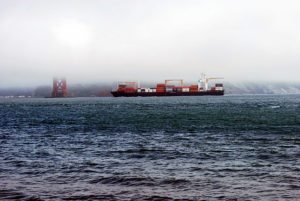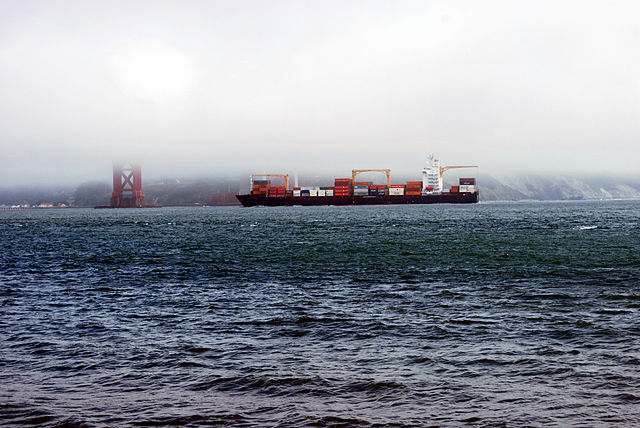 The Baltic and International Maritime Council (Bimco) says the fronthaul leg of the transpacific voyage is the trade lane that needs the most watching, and identifies the top commodities to monitor in the trade tiff between the U.S. and China.
The Baltic and International Maritime Council (Bimco) says the fronthaul leg of the transpacific voyage is the trade lane that needs the most watching, and identifies the top commodities to monitor in the trade tiff between the U.S. and China.
“The global shipping industry naturally gets concerned when two nations of huge importance to most shipping sectors get in the ring to fight a trade war—gloves off,” said Anastasios Papagiannopoulos, Bimco president and principal of dry bulk shipping company Common Progress.
“I am still hopeful that world trade will not implode and encourage the involved parties to avoid a brutal and harmful escalation that will affect the shipping industry badly.”
The U.S. is China’s largest trading partner measured by value, and China is the largest one-country trading partner that the U.S. has. But with the current trade tensions between the two nations, “what matters to the container shipping industry is volumes that may be lost on the essential leg of a transpacific voyage from China into the US,” said Bimco.
In container shipping, the fronthaul of any trade dictates the amount of shipping capacity deployed on that trade lane. The fronthaul leg of a trade lane, being that which holds the higher container volume transported as compared to the return leg (“backhaul”).
Bimco’s chief shipping analyst Peter Sand commented: “The shipping industry is concerned with a lower level of US containerised imports which may become a result of a trade war between the US and China. If fronthaul volumes go down, oversupply of ships develops causing utilisation to drop alongside freight rates and earnings on the transpacific networks.”
In many aspects, backhaul shipments only serve to cover a part of the repositioning costs of a ship to the next fronthaul voyage—they don’t generate profits.
When container alliances and individual carriers optimize their global networks, which they constantly do, they try to match shipping capacity with that of shipping demand. As more containers move from China to the U.S. than the other way around, that part of the trade is the constraining element in the optimizing matrix, Bimco explained.
“Only when we have growing cargo movements on the fronthaul leg, is more shipping capacity required—meaning there is an increasing demand for ships. Compare this to cargo movements growing on the backhaul leg, where you are nowhere near the limit of using the deployed shipping capacity at full extent. That demand growth will not result in a need for more ships—it will only deliver a higher utilisation of ships where available space is amble.”
About 1.8 million TEUs of Chinese imports from the U.S. and up to 3 million TEUs exported from China into the U.S. will be subject to higher tariffs ensuing from the trade face-off, according to Drewry. Nearly 2.5% of total global containerized trade can be affected.
Bimco said that of the cargo groups that are relevant to pay closer attention to, the top commodities on the Far East to North America trade lane are furniture, electrical machinery, rubber manufactures, clothing and accessories, and metal manufactures—others.
The top five commodities on the North America to Far East trade lane are pulp and waste paper, cork and wood, meat and meat preparations, vegetables and fruit, and ores and scrap.
Photo: BenBench





